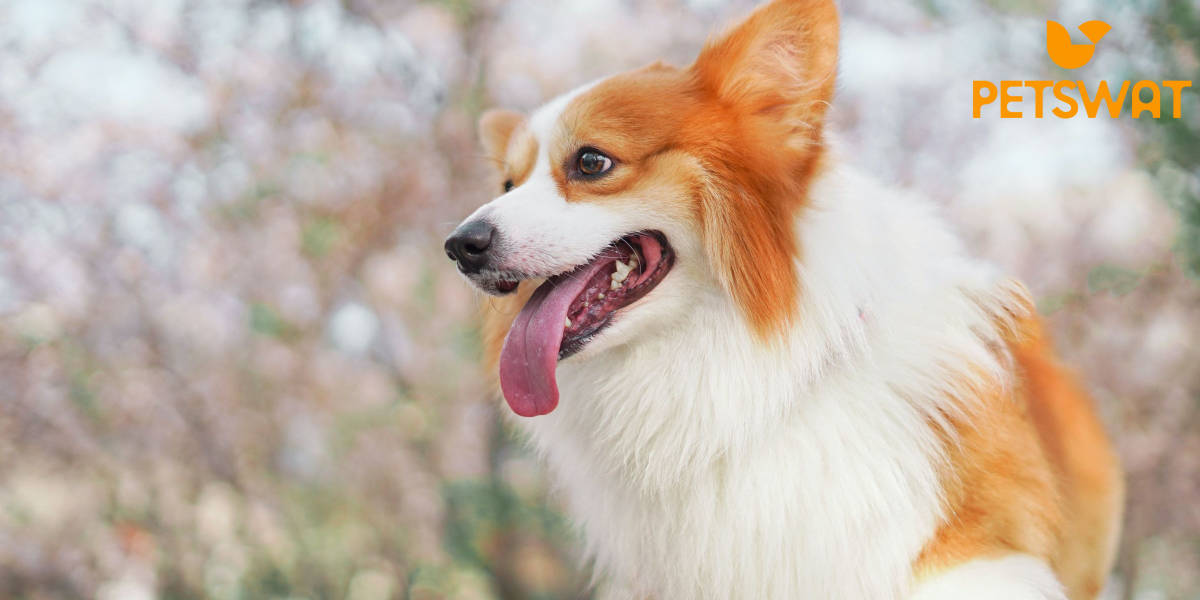Grooming is an essential part of caring for your Corgi. It not only helps to keep them looking their best, but it also plays a crucial role in their overall health and well-being. One aspect of grooming that often sparks debate among Corgi owners is whether or not to shave their furry friend. In this article, we will explore the advantages and disadvantages of shaving your Corgi, as well as alternative grooming methods. So, let’s jump in and explore can you shave a corgi!
tl;dr: Shaving a Corgi is generally not recommended as their double coat serves to regulate their body temperature and protect their skin, but trimming or grooming can be done to maintain their coat.
Regular grooming helps to prevent matting, keeps their coat clean and free from debris, and allows you to check for any skin issues or abnormalities.
Advantages of Shaving Your Corgi: Easier Maintenance and Reduced Shedding
One of the main advantages of shaving your Corgi is that it can make grooming much easier. The dense double coat of a Corgi can be prone to matting and tangling, especially during shedding season. Shaving can help to eliminate these issues by removing the excess hair and reducing the chances of mats forming. This can save you time and effort when it comes to brushing and maintaining your Corgi’s coat.
Another advantage of shaving is that it can help to reduce shedding. While Corgis are known for their adorable fluffy coats, they are also notorious shedders. Shaving can help to minimize the amount of hair that is shed around your home, making it easier to keep clean. It can also help to keep your Corgi cooler during hot weather, as the removal of excess hair allows for better air circulation.
Disadvantages of Shaving Your Corgi: Risk of Skin Irritation and Sunburn
While there are advantages to shaving your Corgi, there are also some potential disadvantages that need to be considered. One of the main risks associated with shaving is the potential for skin irritation. Shaving can leave the skin more exposed and vulnerable to irritation, especially if the clippers are not used correctly or if the skin is sensitive. This can lead to redness, itching, and discomfort for your Corgi.
Another risk of shaving is sunburn. The dense double coat of a Corgi provides natural protection against the sun’s harmful rays. When this coat is shaved, the skin becomes more exposed to the sun, increasing the risk of sunburn. This is particularly important to consider if you live in a sunny climate or if your Corgi spends a lot of time outdoors.
To mitigate these risks, it is important to take precautions when shaving your Corgi. Use clippers that are specifically designed for pet grooming and ensure that they are clean and well-maintained. Take breaks during the grooming process to allow your Corgi’s skin to rest and recover. If you live in a sunny climate, consider using pet-safe sunscreen or providing shade for your Corgi when they are outside.
Factors to Consider Before Shaving Your Corgi: Coat Type, Climate, and Health Condition
Before deciding whether or not to shave your Corgi, there are several factors that you should consider. The first factor is your Corgi’s coat type. While all Corgis have a double coat, some have a longer and thicker outer coat than others. If your Corgi has a longer coat, it may be more prone to matting and tangling, making shaving a viable option. However, if your Corgi has a shorter coat, shaving may not be necessary or beneficial.
The climate in which you live is another important factor to consider. If you live in a hot and humid climate, shaving your Corgi may help to keep them cool and comfortable. However, if you live in a colder climate or if your Corgi spends a lot of time outdoors during the winter months, shaving may not be advisable as it can leave them more susceptible to the cold.
Lastly, you should consider your Corgi’s health condition. If your Corgi has any skin issues or allergies, shaving may exacerbate these problems. It is important to consult with your veterinarian before making a decision to ensure that shaving is safe and appropriate for your Corgi.
Preparing Your Corgi for a Shave: Bathing, Brushing, and Trimming
Before you begin the shaving process, it is important to properly prepare your Corgi. This includes bathing, brushing, and trimming their coat. Start by giving your Corgi a thorough bath using a gentle dog shampoo. This will help to remove any dirt or debris from their coat and make it easier to shave.
After bathing, thoroughly dry your Corgi’s coat before brushing. Use a slicker brush or a comb to remove any tangles or mats. This will help to ensure that the clippers glide smoothly through the coat and reduce the risk of pulling or snagging.
If your Corgi has any long hair around their paws or ears, trim these areas carefully with scissors before shaving. This will help to prevent the clippers from getting caught in the longer hair and causing discomfort for your Corgi.
Choosing the Right Tools and Techniques for Shaving Your Corgi: Clippers, Scissors, and Blades
When it comes to shaving your Corgi, it is important to choose the right tools and techniques. Invest in a good quality pair of clippers that are specifically designed for pet grooming. Look for clippers that have adjustable blades and multiple speed settings, as this will allow you to customize the shave to your Corgi’s needs.
It is also important to choose the right blades for your Corgi’s coat type. For shorter coats, a shorter blade may be sufficient, while longer coats may require a longer blade. Consult with a professional groomer or your veterinarian for guidance on the best blade length for your Corgi.
In addition to clippers, you may also need a pair of scissors for trimming hard-to-reach areas or for touch-ups. Make sure that the scissors are sharp and have rounded tips to prevent accidental cuts or injuries.
Step-by-Step Guide to Shaving Your Corgi: Safety Tips and Best Practices
When it comes to shaving your Corgi, it is important to follow a step-by-step guide to ensure safety and effectiveness. Here is a general guide to help you get started:
1. Start by ensuring that your Corgi is calm and comfortable. If they are anxious or stressed, consider using calming techniques such as treats or gentle massage.
2. Begin shaving from the neck down, moving in the direction of hair growth. Use slow and steady strokes, being careful not to apply too much pressure or go over the same area multiple times.
3. Pay special attention to sensitive areas such as the belly, armpits, and groin. These areas may require extra care and caution.
4. Take breaks as needed to allow your Corgi’s skin to rest and recover. This will help to prevent irritation and discomfort.
5. After shaving, carefully inspect your Corgi’s coat for any missed spots or uneven areas. Use scissors to trim any stray hairs or make any necessary adjustments.
6. Once you have finished shaving, give your Corgi a final brush to remove any loose hairs or debris.
Aftercare for Shaved Corgis: Moisturizing, Sun Protection, and Regular Checkups
After shaving your Corgi, it is important to provide proper aftercare to keep their skin healthy and protected. One important aspect of aftercare is moisturizing. Shaving can leave the skin dry and prone to irritation, so it is important to use a pet-safe moisturizer to keep the skin hydrated and nourished.
If you live in a sunny climate or if your Corgi spends a lot of time outdoors, it is important to provide sun protection. Use pet-safe sunscreen on exposed areas of skin to prevent sunburn. You can also provide shade or use protective clothing to minimize sun exposure.
Regular checkups with your veterinarian are also important after shaving your Corgi. They can assess the condition of your Corgi’s skin and coat, address any concerns or issues, and provide guidance on proper grooming and maintenance.
Alternatives to Shaving Your Corgi: De-Shedding, Thinning, and Trimming
If you are unsure about shaving your Corgi or if you want to explore alternative grooming methods, there are several options to consider. One alternative is de-shedding, which involves using specialized tools such as de-shedding brushes or combs to remove loose hair from your Corgi’s coat. This can help to reduce shedding without the need for shaving.
Thinning is another alternative grooming method that involves using thinning shears to remove excess hair from your Corgi’s coat. This can help to reduce bulk and make the coat more manageable without completely removing it.
Trimming is another option that involves using scissors or clippers with a longer blade to trim the length of your Corgi’s coat without completely shaving it. This can help to maintain a neat appearance while still providing some protection against the sun and elements.
Conclusion: Making an Informed Decision about Shaving Your Corgi
In conclusion, grooming plays a vital role in the health and well-being of your Corgi. While shaving can offer advantages such as easier maintenance and reduced shedding, it also comes with potential risks such as skin irritation and sunburn.
Before deciding whether or not to shave your Corgi, it is important to consider factors such as coat type, climate, and health condition. Proper preparation, choosing the right tools and techniques, and providing appropriate aftercare are essential for a successful shave.
If you are unsure about shaving, there are alternative grooming methods such as de-shedding, thinning, and trimming to consider. Ultimately, the decision to shave your Corgi should be based on what is best for their individual needs and well-being.
Originally posted 2023-07-28 03:56:24.
Johny is a dedicated pet enthusiast, author, and the driving force behind the insightful content at PetSWAT. With a deep passion for animals and a wealth of knowledge acquired through years of experience, Johny brings a unique perspective to the world of pet care and companionship.



